Sprint Through Anything With The Best Running Shoes
Whether you are training for a marathon or want to start jogging in the morning, a pair of supportive shoes is a must. Running in shoes that aren't designed for it can cause stress on your joints and lead to pain and injuries over time. Proper running shoes, on the other hand, can help prevent these issues by cushioning the midsole of your feet from impact and supporting your arches. They can also help improve your running performance.
While running shoes are essential for staying comfortable while exercising, there are countless styles and fits available on the market. With so many options to choose from, it can be tricky to figure out which pair is right for your needs. In this article, we've rated and reviewed some of the highest-rated running shoes of 2023 to make your search easier. We've also put together a detailed buyer's guide to cover everything you should know about shopping for running shoes.
Our Picks For The Leading Running Shoes In 2023
Brooks Ghost 14 Women's Neutral Running Shoes— Best Overall
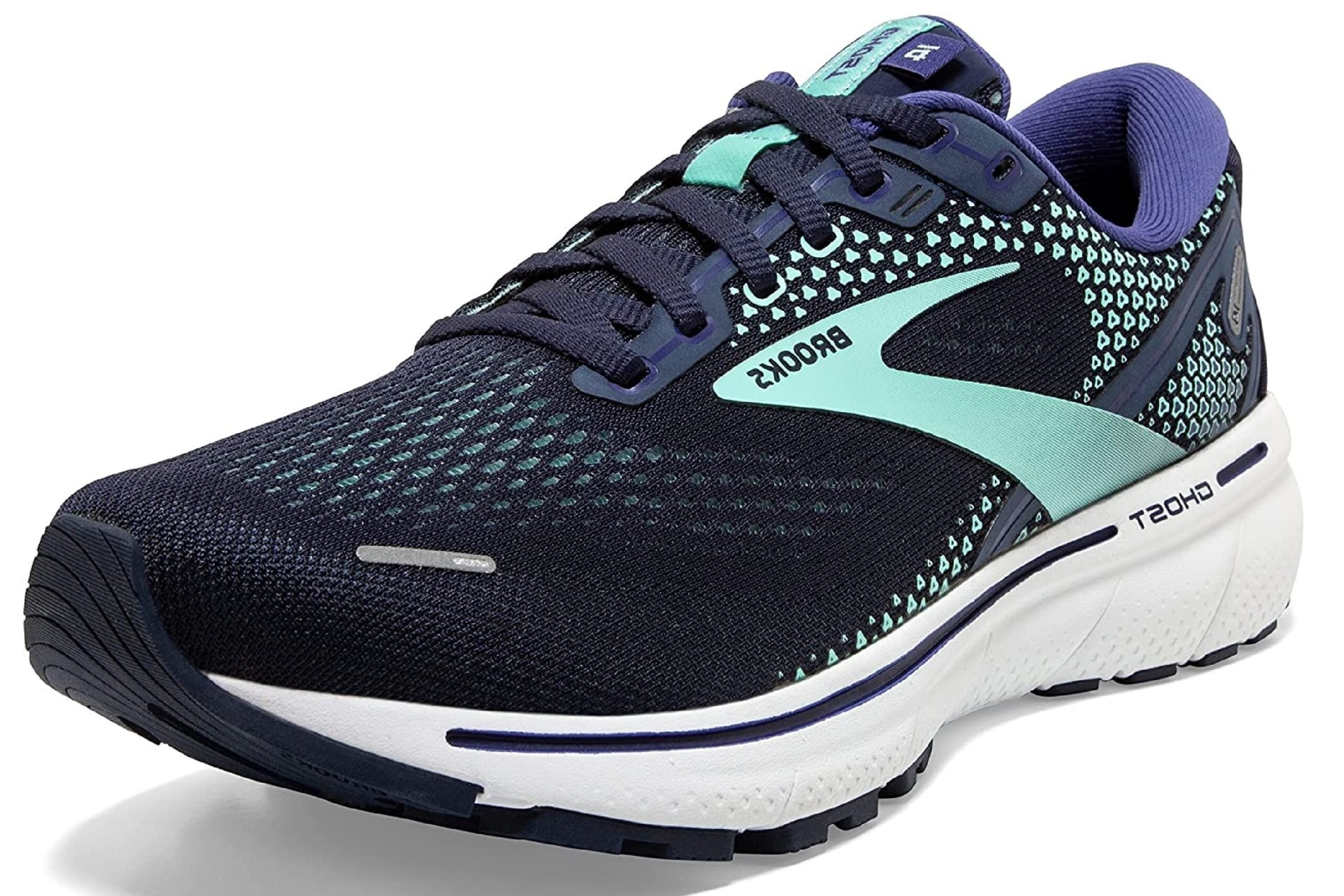
List Price: $140.00
Offering a simple yet supportive fit thanks to innovative cushioning technology, the Brooks Ghost 14 Women's Neutral Running Shoes are the best overall choice on our list. With BioMoGo DNA and nitrogen-infused DNA LOFT cushioning, these lightweight running shoes provide a soft and responsive feel that is ideal for road running, cross-training and more. The segmented crash pad serves as an integrated system of shock absorbers to cushion your stride on various surfaces. This option also features 3D fit print upper technology, a midsole and outsole with raised side walls, and a widened platform to securely hold your feet.
With a thermoplastic polyurethane (TPU) toe cap and rubber sole, these running shoes can help keep your feet safe from rocks while providing good traction on wet and dry surfaces. Weighing 9 ounces, they're available in 34 colors and sizes five to 13 in standard, half, narrow and wide options. Approved by foot and ankle physicians, this product is a certified PDAC A5500 Diabetic shoe and has received the APMA Seal of Acceptance. Because of their durability, comfort and flexible sizing, these running shoes are the top option on the market.
Asics Women's Gel-Venture 8 Running Shoes — Lightweight
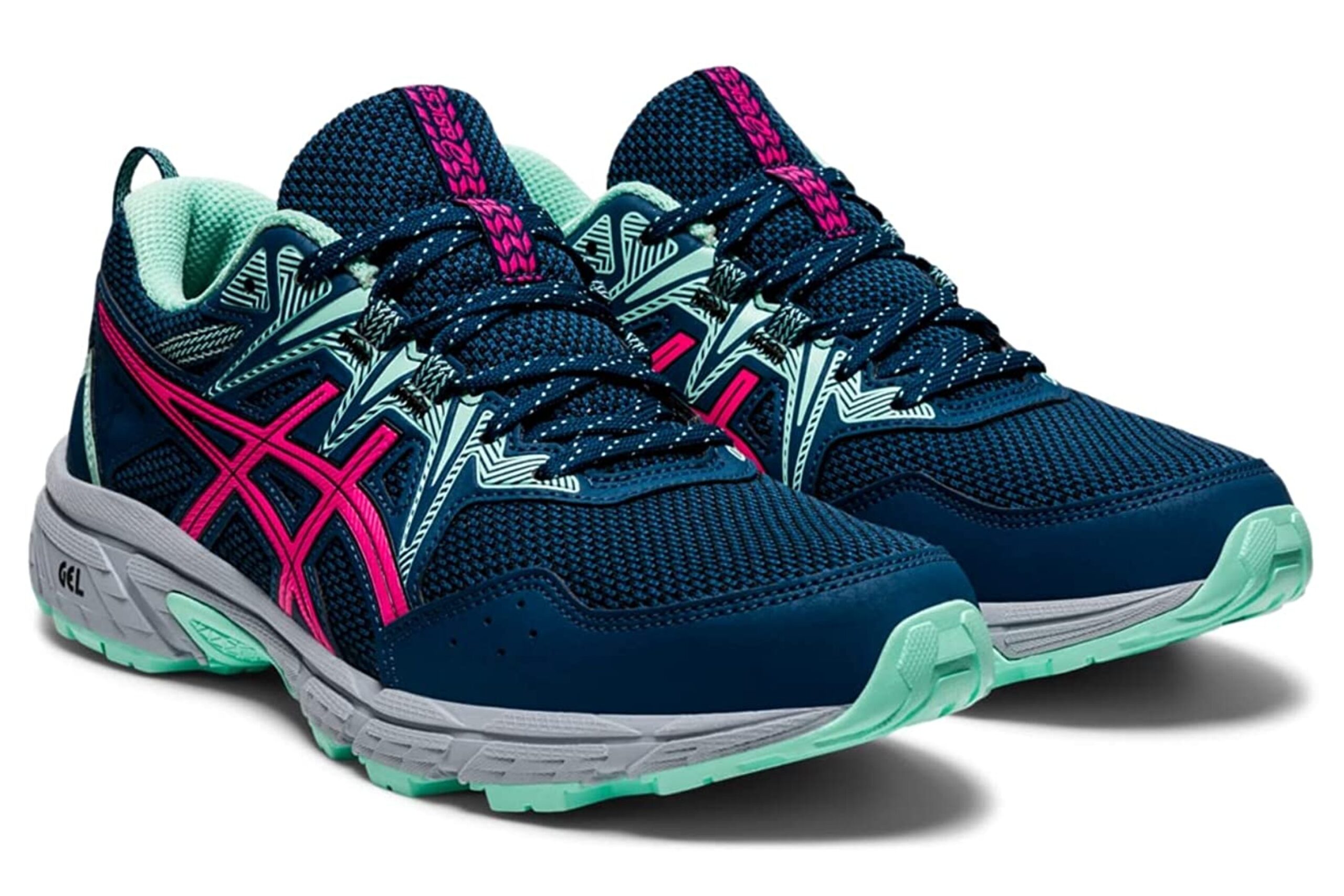
List Price: $70.00
The Asics Women's Gel-Venture 8 Running Shoes weigh only 8.9 ounces, and will improve your comfort and performance while jogging. With gel technology cushioning and re-engineered outsole lugs for better off-road traction, these shoes provide excellent shock absorption on trails. This product features synthetic overlays stitched into a breathable mesh upper in strategic areas, providing added support and durability.
This pair of running shoes is ideal for people who have a neutral stride and normal-size arches. They also come with removable sock liners that accommodate medical orthotics, and are engineered to keep your feet cool and comfortable while you run. Available in 29 colors and sizes five to 12 in standard, half and wide options, you should be able to find the ideal style and fit for your needs.
Nike Pegasus 37 Mens Running Shoes – Most Versatile
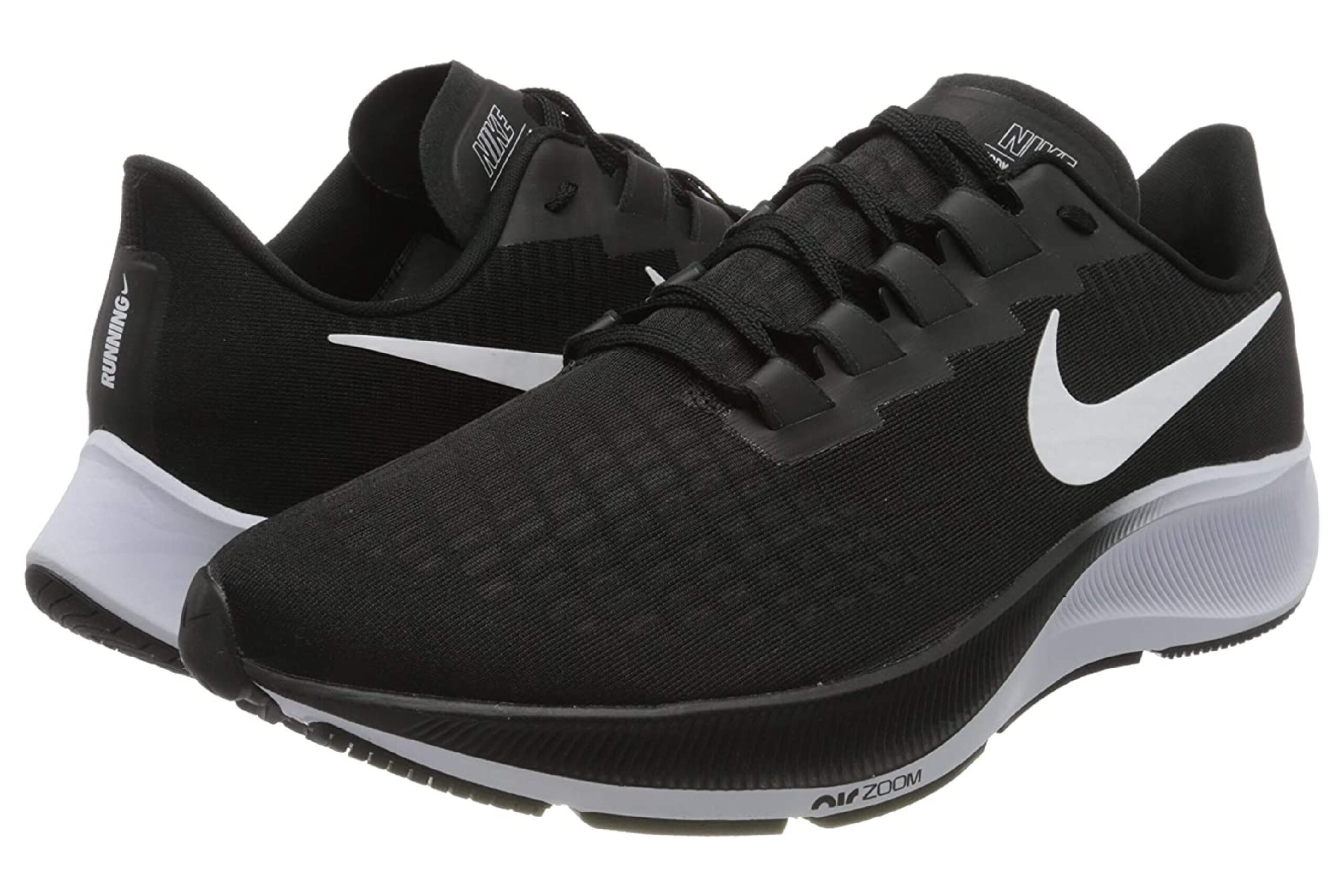
List Price: $69.60 – $120.00
The Nike Pegasus 37 Men's Running Shoes are designed with a reinforced toe cap and are springy enough to handle easy and long runs alike. This option delivers plush cushioning that features a combination of foam and air to keep your feet secure and comfortable while on the road. The upper is made of lightweight mesh with a structured overlay to ensure a snug fit and good breathability, while the rubber outsole has flex grooves for better grip and movement. They are available in 29 colors and come in standard sizes ranging from five to 15 with some half-size options available. This pick is a little heavier at 10 ounces but is still lightweight enough to be comfortable for your everyday running needs.
Adidas Men's Racer Tr21 Running Shoes – Most Color Options
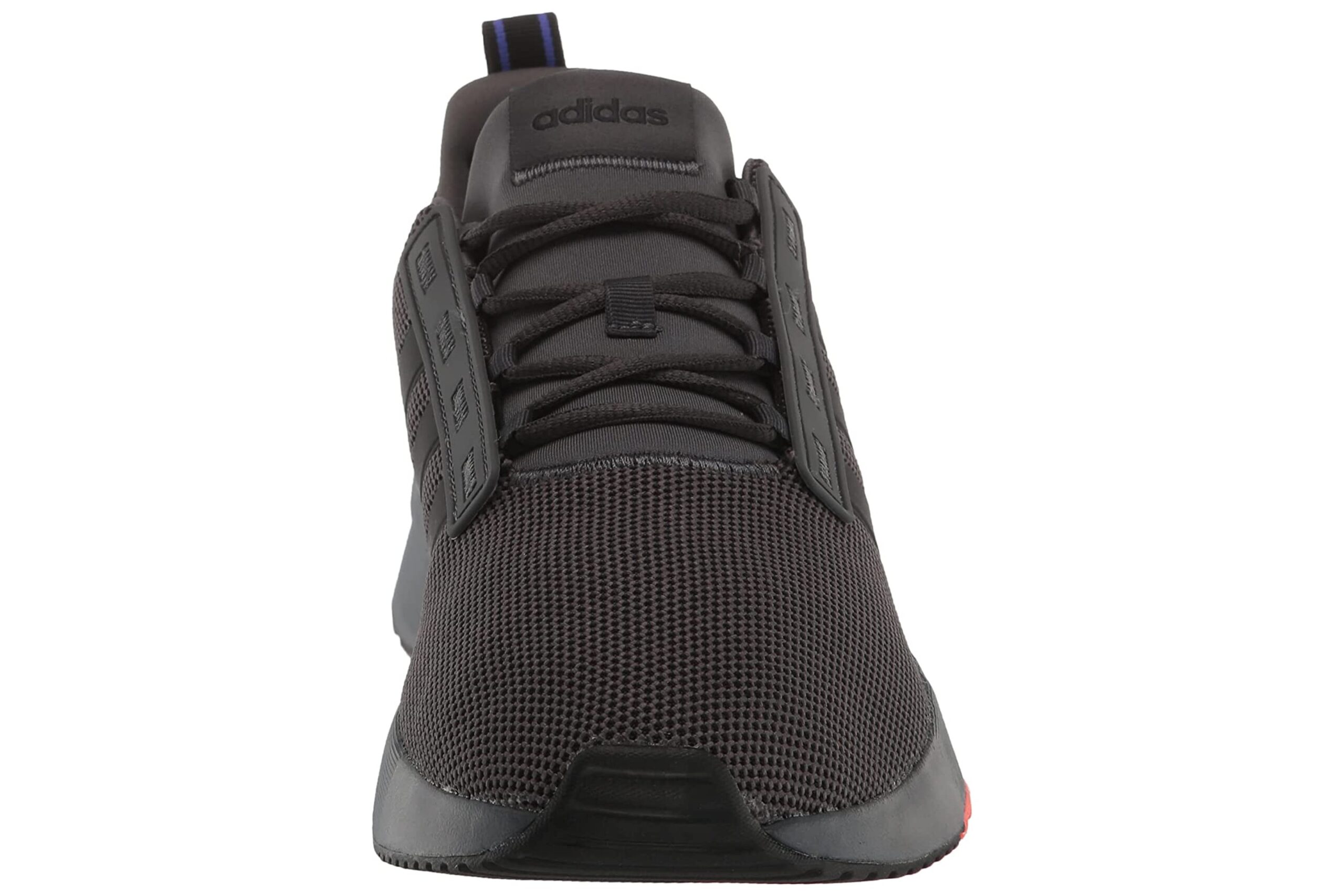
List Price: $75.00
If the look of your running shoes is important to you, you'll definitely want to check out the Adidas Men's Racer Tr21 Running Shoes. Available in a whopping 38 colors that range from classic black and white to green and royal blue, there are plenty of styles to choose from to match your athletic wardrobe. This product features the signature three-stripe design along the sides and has a low-profile, modern look, so you can wear them for running or errands. Thanks to their breathable material, rubber outsole and soft textile upper, these running shoes provide great comfort and traction. The cloud foam cushioning ensures that your arches are well-supported, while the flexible midsole allows you to move easily without experiencing any pinching. You can find these running shoes in sizes four to 14 in standard, half and wide options; they also weigh 10.1 ounces. As an added bonus, this option is made with at least 50% recycled content to help reduce plastic waste.
Saucony Men's Triumph 20 Running Shoes– Eco-Friendly
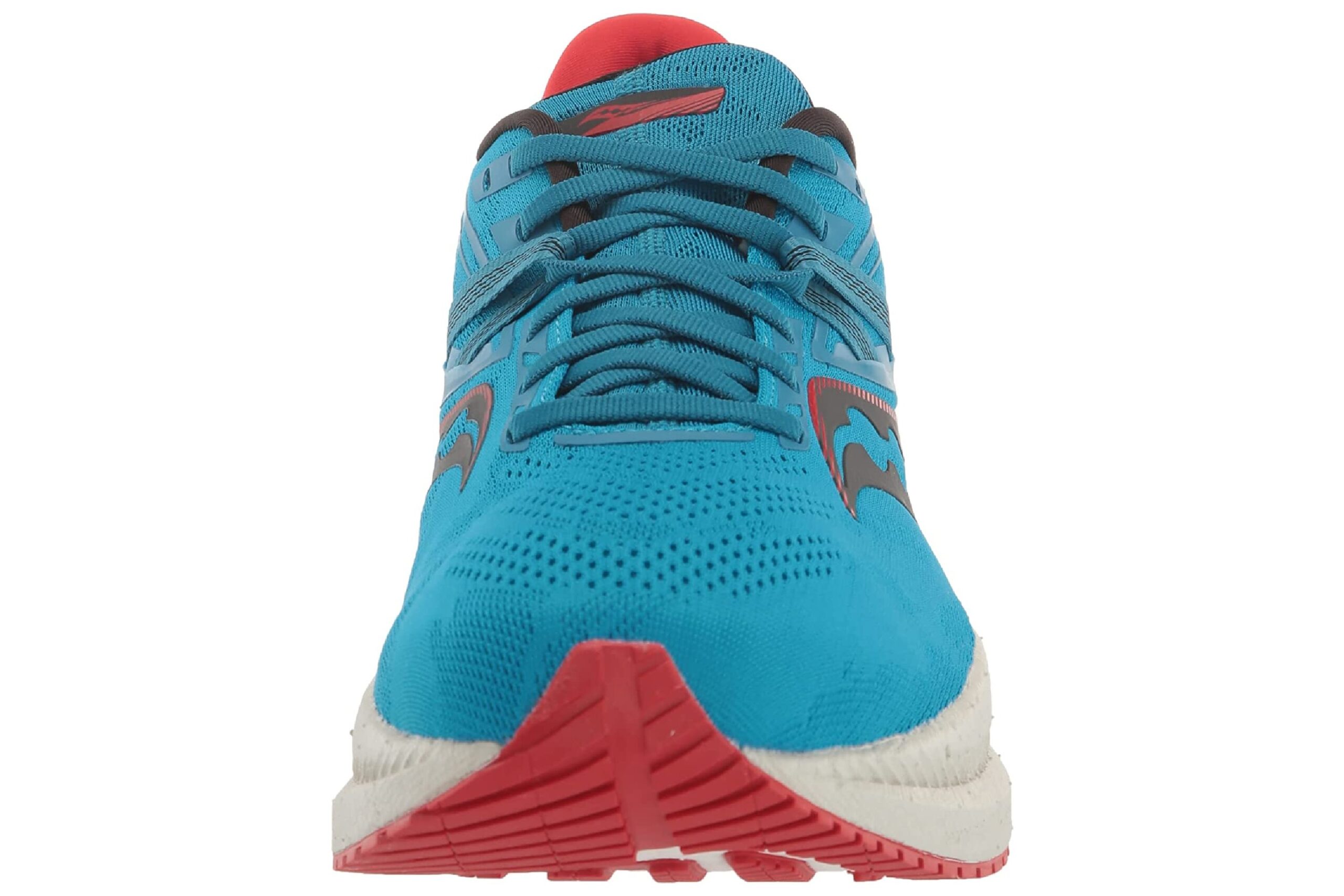
List Price: $159.99
The Saucony Men's Triumph 20 Running Shoes are made with vegan and recycled materials to reduce their environmental impact. Constructed from proprietary soft PWRRUN+ foam and weighing 9.7 ounces, these shoes feel light on your feet but offer support in all the right places. The durable rubber sole offers good traction and grip on various terrain and won't wear out quickly. This model's upper and lacing designs have been redone to improve the fit, making them more snug and secure but not too tight. The Triumph 20 comes in 14 colors and sizes ranging from seven to 15 in standard, half and wide options.
How To Pick The Ideal Pair Of Running Shoes: A Buyer's Guide
Finding the ideal pair of running shoes is important to ensure that you get the most out of your training sessions while keeping your joints and feet protected from injuries. But with the range of options available on the market, it can be difficult to figure out which pair is right for you. We've put together a comprehensive buying guide to help you choose the optimal running shoes for your needs.
Different Types Of Running Shoes
Running shoes can differ depending on your usage and the type of activities or training you want to do in them. Here are two of the most popular types of running shoes that you will find on the market:
Road Running Shoes
Because roads and walkways are harder and more even than other types of terrain, a specific style of running shoe is ideal. Road running shoes are usually lightweight and feature plush cushioning to soften the impact of your footfalls on a hard surface, whether you're jogging on a sidewalk or a treadmill. They should also have a flexible design for optimal comfort and typically feature flatter, smoother soles.
Trail Running Shoes
Trail running shoes are designed for rocky, uneven terrains where a superior grip and fit are essential. This type of shoe is appropriate for a variety of surfaces, including damp, muddy or soft terrain. That means they should feature a grippy sole, often made out of durable rubber, to provide better traction and control. Trail running shoes also typically have a reinforced toe cap or upper to protect your feet from roots and rocks.
Types Of Foot Strides
Neutral
Neutral strides have a landing position in which the outside of the heel meets the ground while the foot rolls slightly inside to cushion the impact. Neutral shoes are the most comfortable for neutral runners (unless your body mass index is 27 or above, in which case more support may be necessary).
Underpronation
Commonly referred to as supination, this type of stride is when you land on the outside of your heel and don't roll inward sufficiently. An underpronated foot may have a particularly high arch or instep, leading to more weight placed on the outer edge of the foot. This type of stride generally leads to the outer side of shoes wearing out more quickly. Shoes with plenty of cushioning are ideal for underpronators.
Overpronation
You guessed it right: as the opposite of underpronation, this is when your foot rolls excessively from the outside of your heel to the inside of your foot. Overpronation is related to lower arches that cause your feet to flatten more excessively than they should. This type of stride usually can be detected if you notice the inner part of your shoes wearing out more rapidly. Overpronators should look for stable running shoes for maximum protection against injuries.
Injury is a possibility for any runner, but you can exacerbate overpronation and underpronation when you wear the incorrect type of footwear. While you can rely on advice from retail stores, it's also essential to pay attention to your own body. Even if a pair of running shoes doesn't fit into the ideal standard for your stride type, if it feels good on your feet when you're running, it's probably the appropriate shoe for you.
Factors To Consider When Purchasing Running Shoes
Spacious Toe Box
The space where your toes sit in a shoe is the toe box. You need to make sure that your running shoes are equipped with a spacious toe box so that your toes have enough space to wiggle around. The toe box should have room both vertically and horizontally to provide optimal comfort.
- Toe box length: It's fairly obvious that your toes need plenty of room to spread out. This is because your toes might swell a little when you run and jog. Running in shoes with a narrow toe box can cause pain and discomfort, which can make your run uncomfortable and, sometimes, impossible. So you should check the space between the toe box and the edge of the running shoes you're considering purchasing to make sure your toes have room to spread out vertically. The ideal toe box should have a thumb's width of space between your toe and the end of the shoe.
- Toe box width: A wide toe box is just as important as a slightly long one. Make sure your toes can move around in the toe box without feeling cramped. If they can't, your toes could start hurting, making it hard to concentrate on your running session or workout. To test your toe box width, you should put on running shoes and check if your toes can move around easily in the shoe.
Customized Arch
It's easy to overlook the arch support and fit of a pair of running shoes, but these are critical considerations. The arch of the shoe should conform to the shape of your foot for maximum stability while you are moving around. Improper arch support can lead to a range of issues, such as foot pain, bunions, swollen soles, back and leg injuries, muscle damage and joint problems. If your running shoes don't have a high enough arch, or the arch is too high, you may need to add an insert or switch to a different model.
Comfort
Choosing running shoes that feel good on your feet is important to make your training more enjoyable and safer. Most experts advise going one size (or half-size) up when purchasing running shoes to ensure they have plenty of space for your feet which may swell up slightly while exercising.
The top, insole and heel counter all contribute to the shoe's wearability and comfort. You can also find different running shoes with thicker cushioning in the midsole, making the shoes more relaxed and comfortable to walk in. Opting for running shoes with features and materials that improve their breathability can also keep you cool and comfortable while training. So, try to pick a pair of running shoes that fits well and is designed to be comfy.
Stability
Stability is essential because no one wants their running shoes to cause them to lose their balance. Many different shoemakers add stability to their running shoes through a variety of distinct features. This can be through the design of the lacing, midsole or upper. Many manufacturers also use different types of foams to distribute weight and give runners stability. Similarly, a broader shoe construction with a wide platform might be helpful.
People Also Asked
What is the difference between men's and women's running shoes?
Men's and women's running shoes are distinctive in several ways. Women's running shoes often have narrower heels to better accommodate their smaller feet and lower body weights. They also usually feature more lightweight designs. Conversely, men's running shoes are typically bulkier and more robust to accommodate larger and wider feet. Because of individual differences in foot size, this may not hold true for all men and women so it's a good idea to look at sizing charts before making a purchase. Some shoe manufacturers also offer unisex sizing.
Can I wear my running shoes to the gym?
It might be tempting to use the same shoes for road running, trail running and workouts, but experts recommend wearing the right shoes for each situation. The ideal trail running shoes will protect your feet on uneven ground, while workout shoes should give you grip and stability at the gym.
If you lift heavy weights in the gym, a cushioned, high-stack running shoe might not be stable enough to give you the solid base you need when holding heavy weights above your head. In the same way, even the most responsive cross-training shoes can't compete with dedicated road running shoes which should offer plenty of cushioning to withstand impacts on hard pavement.
Are road running shoes different from trail running shoes?
Running shoes are ideal for hard, smooth surfaces. The cushioning is fine-tuned to reduce the impact force when landing on the road, while the upper is tight to keep the foot locked in as you run. Most running shoes have a higher stack height these days, too, to get more energy back. The outsole is also usually smoother so that there is more surface area for better grip.
Trail running shoes often have big lugs on the bottom to dig into soft surfaces like mud and grass. They also usually have a rock shield insert in the middle to protect your feet from rocks and unexpected obstacles like tree roots. Because trails are usually more slippery and wet than roads, trail shoes are heavier and have better weather protection.
When should I replace my running shoes?
Depending on how often you run, how much you weigh and how well you take care of your running shoes, the average mileage at which you need to replace them is between 300 and 500. After 300 miles, the foam in your shoes may no longer return as much energy, which might affect your running form and cause you to go more slowly than you otherwise would. Other warning signs include a loss of grip on the sole or a frayed upper. If there is no obvious evidence of damage or discomfort before 500 miles, there is no need to replace them right away.
Can I get injured if I run without wearing running shoes?
Some competitive runners are choosing to run barefoot or in minimalist toe shoes. But if you're used to jogging in cushioned shoes, being barefoot can take some time to get used to. Experts still recommend getting running shoes to avoid probable injuries and ensure your safety.
Running in sneakers, which lack support and cushioning, can also be damaging to your feet and joints. Similar to running shoes, the sole of a sneaker is elevated high off the ground. Most sneakers have a flat sole and minimal cushioning, however, so they don't offer any sort of skeletal support. This can prevent your feet from striking the ground properly and stabilizing your body.
How should I get into the habit of running?
You should ease into running by walking or jogging shorter distances (a couple of hundred meters) at first, then working your way up to longer ones at faster speeds as your fitness improves. If you're just starting out as a runner, it's ideal to start running on asphalt roads rather than concrete or sand, as this surface will feel more comfortable and you'll be less likely to sustain an injury.